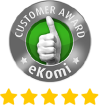Simon Wood
5 Predictions For the Future of Agile and Teams
- September 28, 2021
- , 9:31 am
- , Agile
As a consultant, I have had the privilege of working with a large number of organisations; from world-class software development powerhouses, to startups just getting their feet wet.
No matter the size, the technology, or the market, they all have at least one common interest: to gain a competitive advantage.
They might not always word it the same way from company to company, but it’s what they want. They want to build a better product than their competitor or to improve the efficiency of their own operations. Big or small, new or established – the organisations I’ve worked with demand quality and consistency from their development teams.
The best development teams in the world are capable of shipping high-quality software on a consistent, reliable basis, for an extended period of time – with maximum flexibility. How?
Because these organisations create a working environment based on the principles of leadership, teamwork and trust.
The benefits of adopting these principles form deep roots within a company. Trust in their team means better engagement, motivation, satisfaction and higher productivity – but also leads to effective planning, and lower maintenance costs, because teams are self-managing and enforcing good standards. This approach always focuses on self-improvement in the name of efficiency (or sanity).
Using the best agile teams in the world as a benchmark, I’ve made five predictions on the future of agile and teams.
1 – Agile pods will dominate
The best teams in the world are cross-functional and autonomous. I predict that the majority of agile teams will be working in pod structures: self-organising, autonomous teams who are equipped with all of the talent and skills required to deliver a product.
This trend is emerging because multiple competing perspectives tend to push a team towards the best overall solution.
These teams are entrepreneurial in spirit, professional in attitude.
Agile Connection explains agile pods like this:
“Agile pods are small, custom agile teams, ranging from four to eight members, responsible for a single task, requirement, or part of the backlog. This organisational system is a step toward realising the maximum potential of agile teams by involving members of different expertise and specialisation, giving complete ownership and freedom, and expecting the best quality output.”
The benefits of small, autonomous teams are many – but they end with a product of impeccable quality, produced for a lower cost over the long term.
2 – Team maturity will grow – and so will agencies
I predict that more elite software developers will move into agency work.
Agencies want them, because they’ll be able to sell their clients a “solution team” – one that’s established and capable of delivering a high-quality product for a lower price than their client could build in-house.
Mature teams grow into productive and predictable “mini companies” – if empowered with the right blend of leadership, skill, autonomy, and drive. This is achieved with team member consistency and reduced attrition, positive side-effects of an equitable, trusted and engaged team.
3 – Integrated tools
Integrated tools – like those in the Atlassian stack – offer teams unprecedented visibility into their work and their products. The world’s best teams leverage the integrations between products, and use them to maximise efficiency.
4 – Agile teams will move into sectors beyond development
I predict that The principles of agile will spread far beyond engineering and development, into all areas of a business. Adopting the agile mindset in other departments will cut down on projects that should have been cancelled before they even started.
It’s hard to be an agile team working in an organisation that’s not agile. It’ll take some companies time to adjust. But some are taking the principles and applying them to in-house resources.
For example, agile has already begun to spread to marketing teams; the Clearvision marketing team practices agile marketing – giving the department autonomy and decision-making control over which projects to devote their efforts to. This way of thinking will eventually spread to other areas of the business; let the best team for the job decide how to meet the goal.
Product management is another emerging hotspot – using the Lean Startup methodology, which is an inherently agile way to develop a product.
5 – Data-driven agile
Integrated tools and mature processes will eventually collide with big data.
Now-niche methodologies like Team Software Process (TSP) and Personal Software Process (PSP) will get a second wind, as they offer us a promise for insight into our work.
Nobody likes the fact that agile comes with little objective evidence – but we’re willing to trade that for increased flexibility and throughput.
I believe that soon, we’ll close the gap left by this trade-off; and we can have our data and our flexible way of working. Integrated tools, mature teams, and a desire to improve will push teams toward analytics and data-driven insights.
With big data, performance can be measured – but it takes machine learning to process all that data, and AI to give it context. When somebody figures out how to marry big data analytics with the notoriously-difficult-to-measure agile methods, AI and data will become a core part of our decision-making. Moreover, we’ll have data-led proof that agile teams are (and always have been) the future of work.
Hire agile developers and contractors
Companies who foster agile teams will gain a competitive advantage: better products, made faster – for less. ClearHub helps the world’s best companies hire agile contractors that will transform the way they deliver projects.
Want to know more? Get in touch with the ClearHub team today – call +44 (0) 2381 157811 or send your message to info@clearhub.tech.



